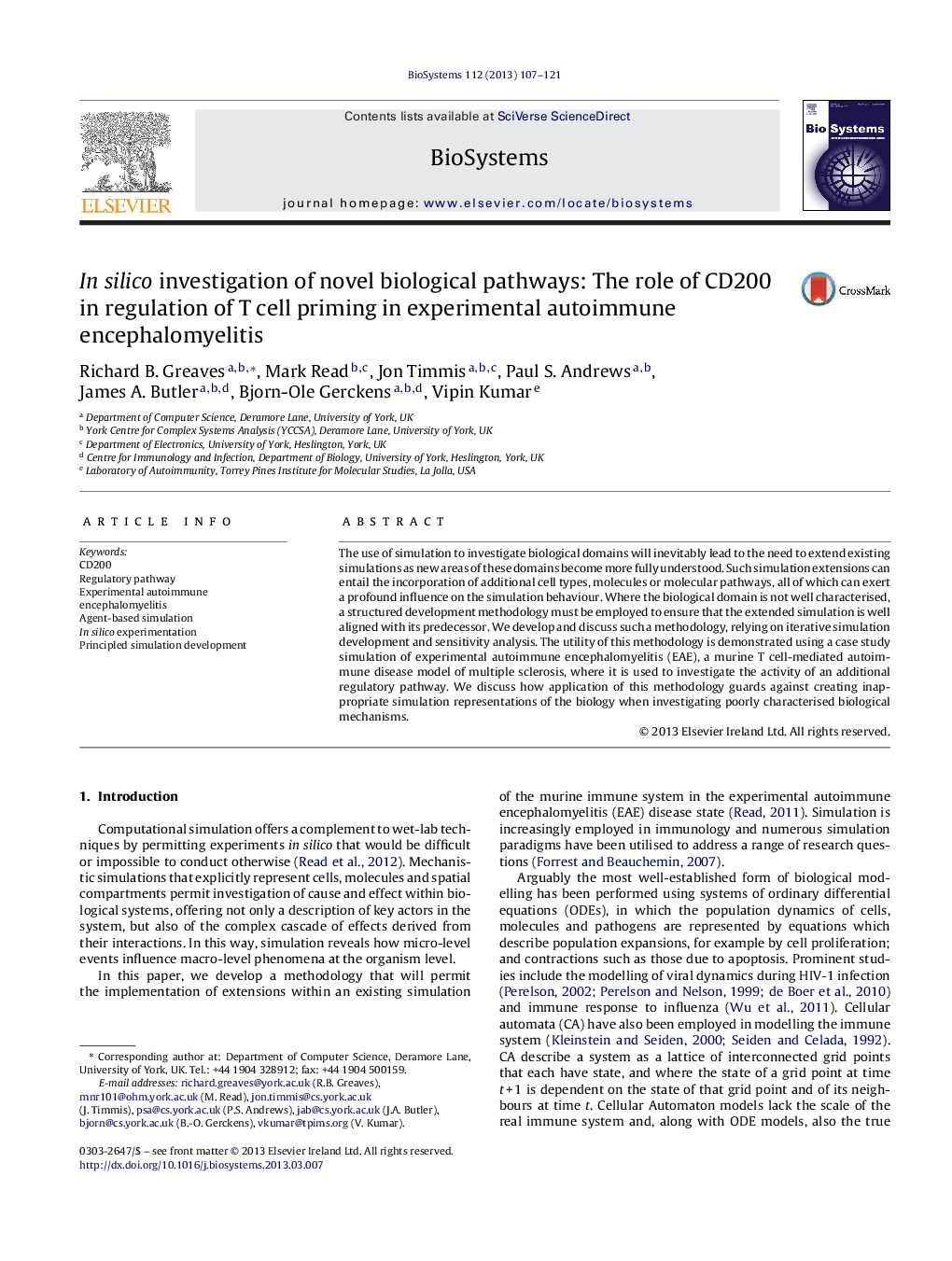| Article ID | Journal | Published Year | Pages | File Type |
|---|---|---|---|---|
| 10884575 | Biosystems | 2013 | 15 Pages |
Abstract
The use of simulation to investigate biological domains will inevitably lead to the need to extend existing simulations as new areas of these domains become more fully understood. Such simulation extensions can entail the incorporation of additional cell types, molecules or molecular pathways, all of which can exert a profound influence on the simulation behaviour. Where the biological domain is not well characterised, a structured development methodology must be employed to ensure that the extended simulation is well aligned with its predecessor. We develop and discuss such a methodology, relying on iterative simulation development and sensitivity analysis. The utility of this methodology is demonstrated using a case study simulation of experimental autoimmune encephalomyelitis (EAE), a murine T cell-mediated autoimmune disease model of multiple sclerosis, where it is used to investigate the activity of an additional regulatory pathway. We discuss how application of this methodology guards against creating inappropriate simulation representations of the biology when investigating poorly characterised biological mechanisms.
Related Topics
Physical Sciences and Engineering
Mathematics
Modelling and Simulation
Authors
Richard B. Greaves, Mark Read, Jon Timmis, Paul S. Andrews, James A. Butler, Bjorn-Ole Gerckens, Vipin Kumar,
